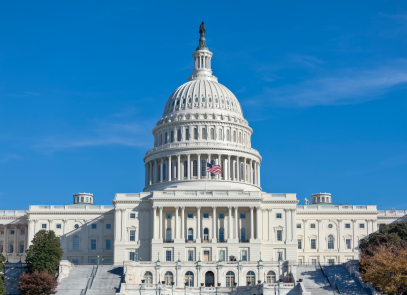Presenting Before the House Subcommittee on Early Childhood, Elementary, and Secondary Education
 On February 14, 2013, I testified at a hearing titled, “Raising the Bar: How Education Innovation Can Improve Student Achievement,” before the House Subcommittee on Early Childhood, Elementary, and Secondary Education.
On February 14, 2013, I testified at a hearing titled, “Raising the Bar: How Education Innovation Can Improve Student Achievement,” before the House Subcommittee on Early Childhood, Elementary, and Secondary Education.
Several witnesses were present to provide personal and professional insight into the advantages of digital learning and technological innovation. The experience was an exciting opportunity to see how personalized innovative learning models are being recognized at the local, state, and now federal level, resulting in more choices for students and families.
Witnesses in attendance included:
- John Bailey, Executive Director of Digital Learning Now;
- Preston Smith, CEO and President of Rocketship Education;
- Jim Shelton, Assistant Deputy Secretary of the U.S. Department of Education’s Office for Innovation and Improvement;
- and myself, Holly Sagues, Chief Policy Officer for Florida Virtual School.
Before the hearing began, we were greeted and prepped on what to expect. Chairman Todd Rokita (IN) came to meet us shortly before we were escorted to the committee room. Chair Rokita and Ranking Member McCarthy welcomed us and opened the session at 10 a.m.
After a brief introduction about each of us, Chair Rokita explained how the timers that were placed in front of us would work. When it was our turn to testify, the timer would show five minutes and the light would turn green. When there was one minute left on the timer, the light would turn yellow. At the end of five minutes, the light would turn red and the Chair would ask us to wrap up.
At this point, I was frantically trying to figure out what I was going to cut out of my 8-minute testimony. Thankfully, I was scheduled to be the third person to speak, so I had 10 minutes to cut my testimony down. When it was my turn to testify, I had gotten through about two-thirds of my testimony when I noticed that the light had turned yellow and I had about 30 seconds left. I quickly jumped to the end and closed. Even with that, I think I went about 20 seconds over.
My testimony shared details about the FLVS story and experience, and why we believe that innovation is transforming education. The learning gains of FLVS students who appreciate the flexibility of online education and digital learning tools were highlighted, along with the fact that our students come from all walks of life: public, private, or charter school students; medically homebound students; homeschool students; student athletes; student performers; working students; and students of families in the military or with international commitments.
Here is a brief excerpt from my testimony:
As online education evolves, FLVS continues to lead the way with creativity and innovation. This year, a number of FLVS digital innovations have emerged including: eight supplemental mobile application products that align with FLVS courses, the development of phase II of the campus-wide mobile app called goFLVS and the new game-based SAT review app called Word Joust; a new story-based pilot middle school math course; and the launch of a new content tool called Octane, in collaboration with the Learning Management System provider UCompass, that launches key content from within course pages.
These innovations and successes throughout the year did not go unnoticed. Based on Algebra I end-of-course assessment data released by the Florida Department of Education, FLVS students outperformed the state by 15 percent in Achievement Levels 3, 4, and 5. The recently released 2012 Advanced Placement Exam results revealed that FLVS students outperformed the state of Florida in overall averages by 14 percent and global overall averages by 2 percent. In the Advanced Placement courses, FLVS serves every kind of student imaginable; yet, the completion rates remain one of the highest in the industry, proving that a wide variety of students can succeed with individualization, personal care, and a flexible pace.
Read the full testimony here.
After we all finished our testimonies, each committee member had the opportunity to ask questions. Once again, here came the timers! Each member had five minutes to ask us questions, express opinions, etc. We were all asked questions, with most revolving around policy obstacles to new innovative approaches to learning. The Chair closed the session at 11:30 a.m., after which we spent a bit of time talking to members and staffers.
Although I feared having nightmares afterward about timers coming to attack at the close of my testimony, I was immensely grateful for the opportunity and would do it again in a minute (or maybe five). View an archived webcast of the hearing or read the opening statement or witness testimonies here.
Post by Holly Sagues, Former Executive Director of Governmental Affairs & Strategic Solutions
